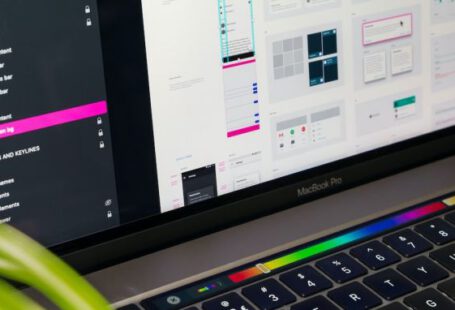In the world of mobile app design, two terms frequently come up: UI and UX. While they may sound similar, they are actually two distinct concepts that play crucial roles in creating successful mobile apps. Understanding the difference between UI (User Interface) and UX (User Experience) is essential for designers and developers to deliver an exceptional mobile app that meets users’ needs and expectations.
User Interface (UI): The Visual Design
The User Interface, or UI, refers to the visual elements of a mobile app. It encompasses everything that users see and interact with on the screen, including buttons, menus, icons, and other visual elements. UI design focuses on creating an attractive and intuitive layout that is visually appealing and easy to navigate. It aims to provide users with a visually pleasing experience that encourages engagement and interaction.
Key elements of UI design include color schemes, typography, iconography, and overall visual consistency. Designers need to consider factors such as brand identity, target audience, and platform guidelines when creating the UI for a mobile app. The goal is to create a visually appealing interface that aligns with the app’s purpose and enhances the overall user experience.
User Experience (UX): The Overall Experience
While UI focuses on the visual design, User Experience, or UX, encompasses the entire experience a user has with a mobile app. It goes beyond just the visual elements and includes factors such as usability, functionality, and overall user satisfaction. UX design aims to create a seamless and enjoyable experience for users, ensuring that they can easily achieve their goals and tasks within the app.
Key elements of UX design include user research, information architecture, workflow design, and usability testing. Designers need to understand the users’ needs, behaviors, and motivations to create an app that addresses their pain points and provides a solution. UX design involves wireframing and prototyping to test and refine the app’s functionality and flow, ensuring that users can easily navigate through the app and accomplish their tasks.
The Relationship between UI and UX
UI and UX are closely related and interdependent. While UI focuses on the visual design, it is an integral part of the overall user experience. A visually pleasing interface can enhance the user’s perception of the app and make it more enjoyable to use. On the other hand, UX design relies on the visual elements of the UI to communicate information effectively and guide users through the app’s features and functionalities.
A well-designed UI can help users understand how to interact with the app and make it easy for them to navigate through different screens and features. At the same time, a well-thought-out UX design ensures that the UI elements are purposeful and intuitive, providing users with a seamless and enjoyable experience.
Conclusion: Striking the Perfect Balance
In the world of mobile app design, striking the perfect balance between UI and UX is crucial for creating a successful app. While UI focuses on the visual design, it is essential to remember that it is just one component of the overall user experience. UX design ensures that the app is functional, easy to use, and meets users’ needs, while UI design enhances the visual appeal and usability of the app.
To create a mobile app that stands out from the competition and delights users, designers and developers must prioritize both UI and UX. By understanding the difference between these two concepts and how they work together, designers can create visually stunning interfaces that provide a seamless and enjoyable experience for users.





